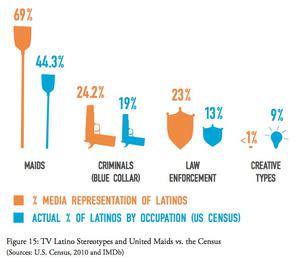This is what I found:
I found a group of young girls, their logo, and a flyer for one of their events. They are playing into the emotional appeal of people by posting a picture of young girls because who wouldn't want to support them? They are advertising by getting their logo anywhere and everywhere that they can without having to pay for it, and they are promoting their events aggressively online. So why does it matter? Why do these blogs matter? They matter because this semester we learned that social change movements start with a purpose and someone willing to fight for it. There are usually leaders elected, signs made, and some type of protest to gain national attention however in Latinitas there is no leader. The Latinitas are the leaders and they have a powerful message that they are ready to share with the world. Their message is one of hope and one of struggle. They want to create their own representation of Latinas in media and they want to be represented through positive and not oversexualized ways. Through this project I have gained huge admiration for everything they are and everything that they have the potential to be. My research question focuses on how journalism provides young latinas with an outlet to express themselves and this project has shown me that they are doing just that. I wont stop here and I will continue to follow their triumps and failures but it has been a pleasure to really step back and analyze this organization as a whole.




